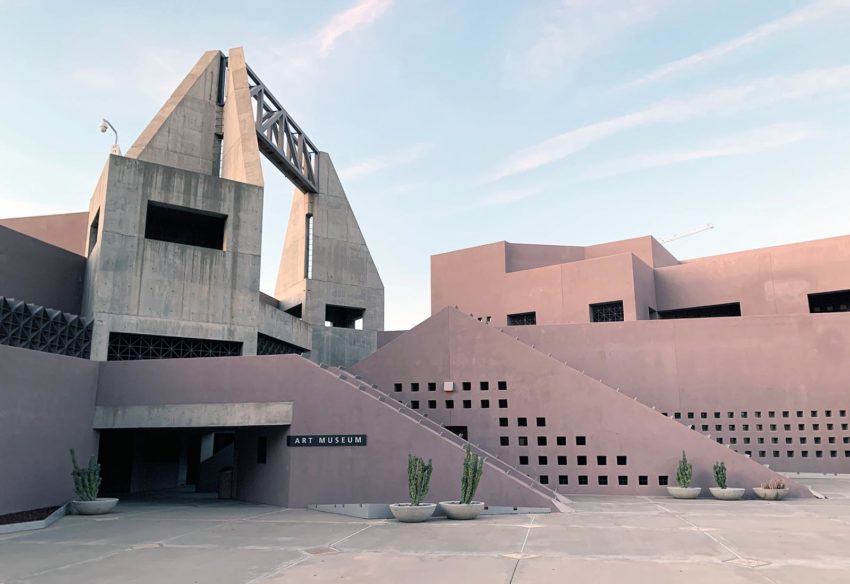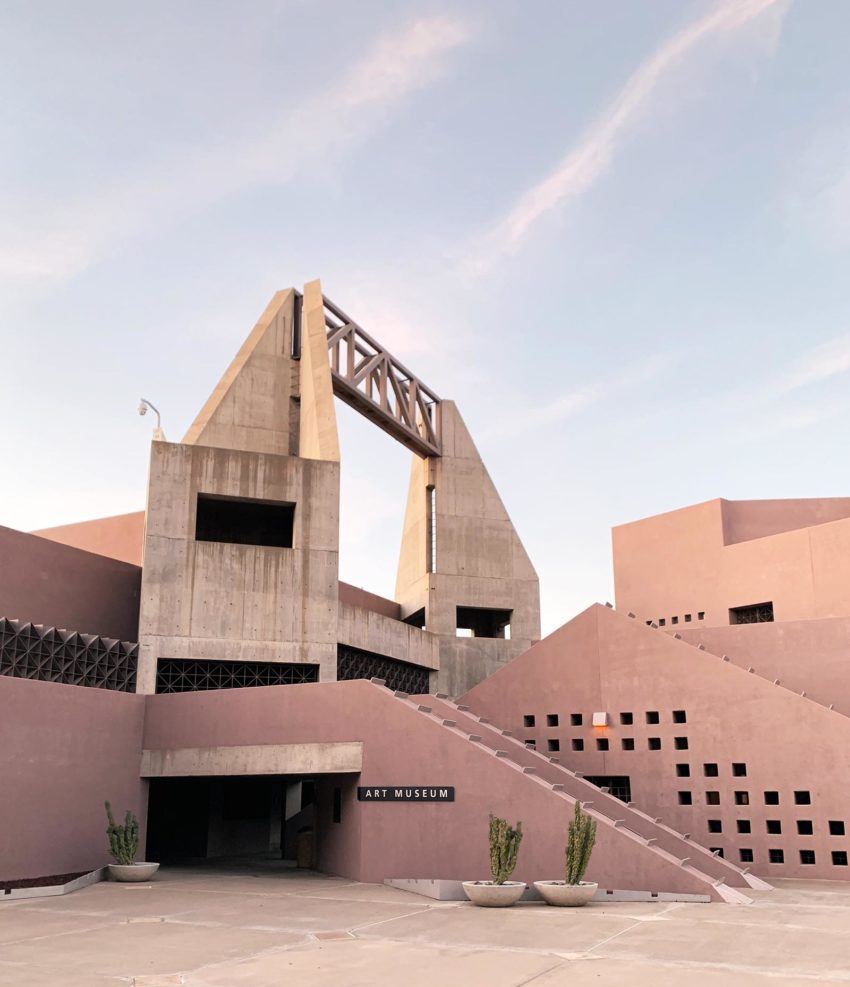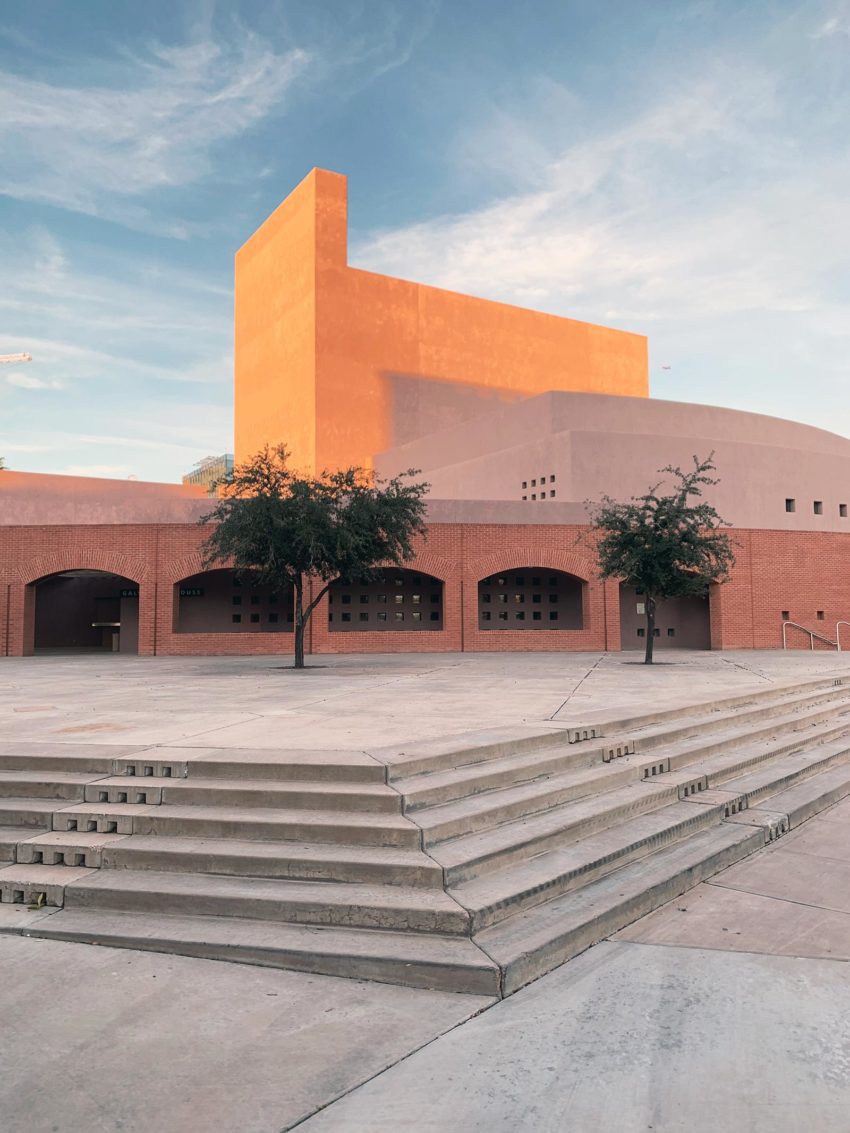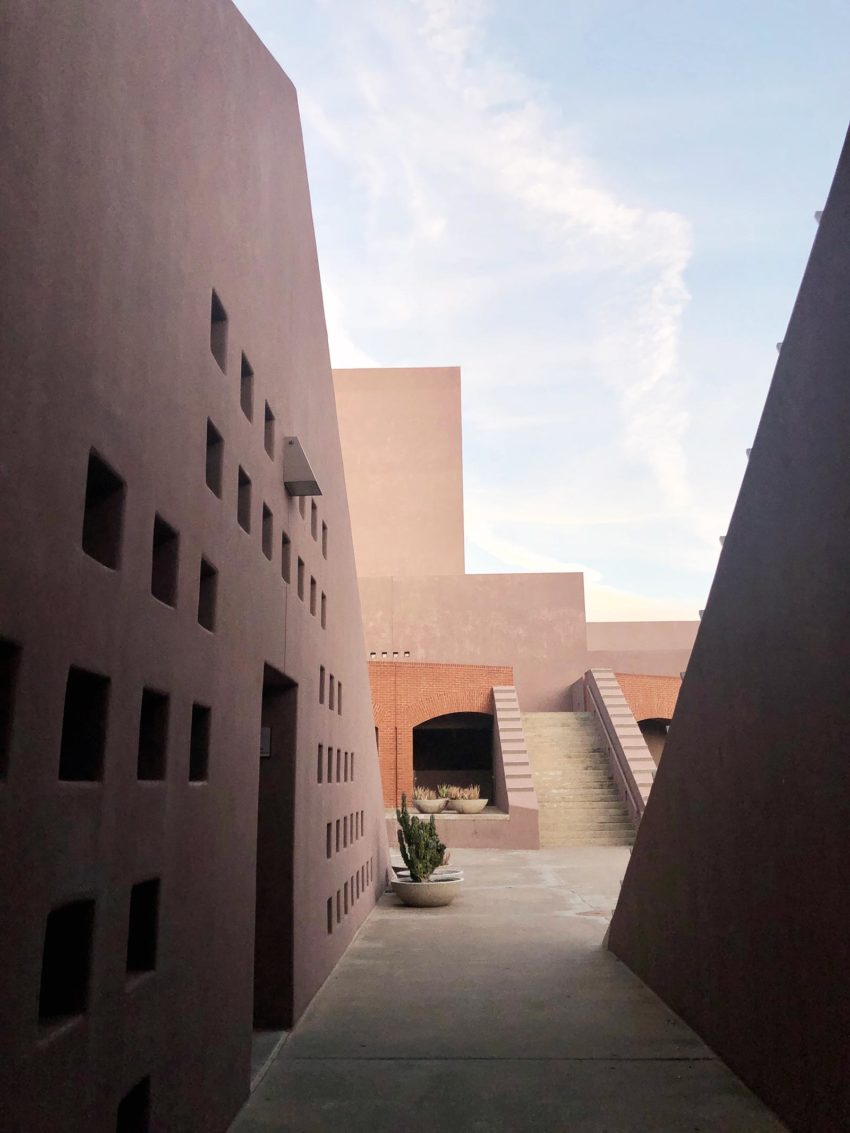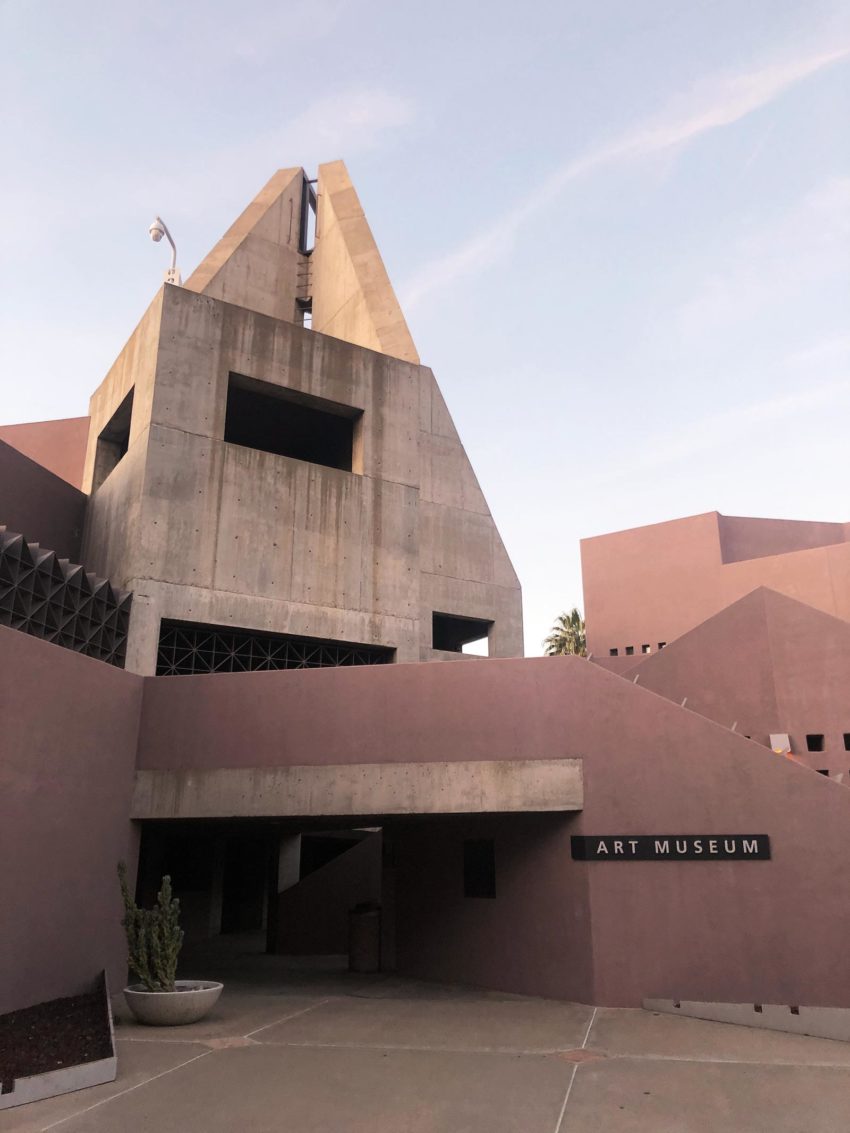In 1990, the architect Antoine Predock completed the Nelson Fine Arts Center on Arizona State University’s Tempe campus. This multifaceted complex houses the ASU Art Museum, the Galvin Playhouse, and dance classrooms and studios. Dubbed the “magic mountain” or the “oasis,” the design draws inspiration from vernacular desert architecture, skillfully responding to the site’s environment and climate. Predock’s innovative approach integrates the building with its desert surroundings, creating a harmonious blend of functionality and aesthetic appeal.
Nelson Fine Arts Center Technical Information
- Architects: Antoine Predock
- Location: 51 E 10th St, Tempe, AZ 85281, Tempe, Arizona, United States
- Client: Arizona State University, Tempe
- Topics: Concrete, Art Center, Color in Architecture, Desert
- Project Year: 1985 – 1990
- Photographs: © ArchEyes
I try to understand place on a deeper level than just the physical or environmental aspects. It includes cultural and intellectual forces, too. It’s an inclusive approach that brings in many disciplines and sees place as a dynamic thing.
– Antoine Predock
Nelson Fine Arts Center Photographs
Desert Oasis of Art and Culture: A Journey Through the Arizona Arts Center
The arts center’s design, which includes a museum, theater arts, and dance departments, involved a special attitude toward the desert—much more than simply imposing the building program on the quasi-urban university site. The harsh and relentless desert presence in Arizona is often denied; the prevailing tendency (in terms of development and attitudes toward public architecture) is to convert the desert into a midwestern oasis to tame the desert.
The building defines a journey, a procession; it defines options and potentials rather than particular paths. It is an open matrix of possibilities for engagement both vertically and horizontally. Art galleries extend the procession. Exterior terraces anchor them for sculpture installations. Steel-plate trellises partly shade these terraces. The gallery sequence is open-ended; visitors can use the sculpture terraces to explore inside and out. They can proceed indoors to the large upper gallery with the highest ceilings and straddles the main entry.
At the center is the Galvin Playhouse with The Dance Studio Theater. The curving arcade/aqueduct delivers water to three fountain locations, one at the theater entry. The theater is reached through the foreground arcade, which has aluminum louvers that form a trellis—the color graduates from light to dark, ending with purple-black side walls inside the theater.
The building defines a journey, a procession; it defines options and potentials rather than particular paths. It is an open matrix of possibilities for engagement both vertically and horizontally.
Garcia Lorca‘s poetry describes the desert’s dualities as “Sol y Sombra.” (Sun and Shadows). This building acknowledges those aspects of the terrain, both spiritually and physically. Zones of the lacy shade create necessary respites from the sun, like the patterns of palo verde leaves cast on the desert floor. Spiky trellis elements help cool spaces, both cavernous and labyrinthine.
Another journey extends to the sky via terraces and balconies toward towers that define the west campus entry as a gateway. From the middle ground, where the theaters and theater arts spaces are located, there is both an ascent and a descent. The multiple journeys are possibilities that become trails as each visitor experiences the building.
Nelson Fine Arts Center Floor Plan
Nelson Fine Arts Center Image Gallery
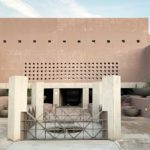

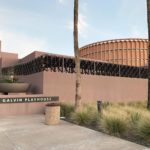
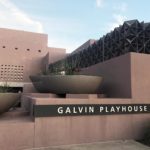



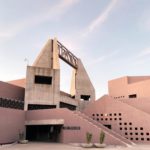
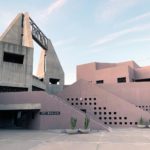
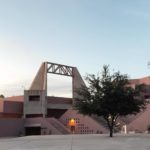

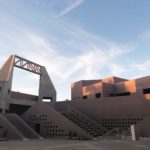
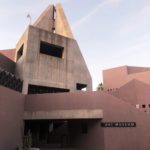

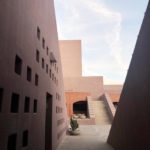

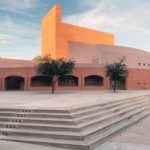
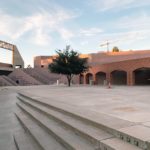
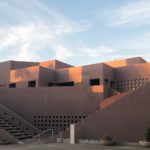
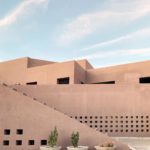

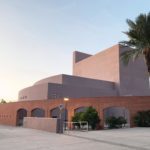
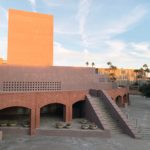
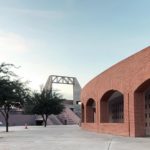


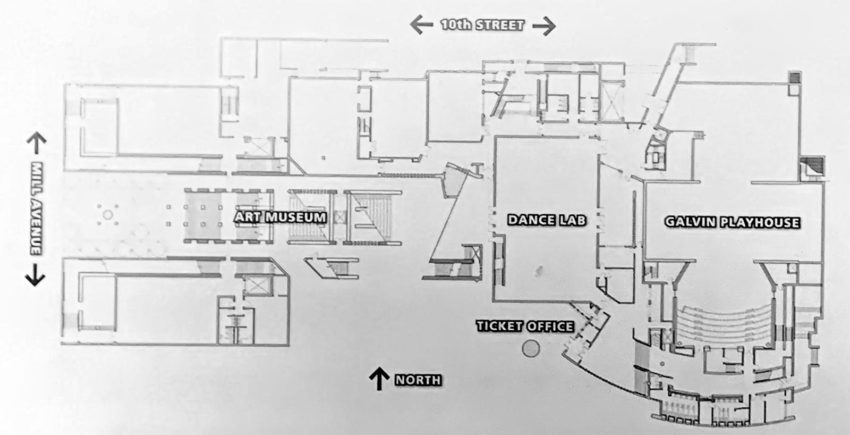
About Antoine Predock
Antoine Predock is an American architect based in Albuquerque, New Mexico, where he founded his studio in 1967. Predock first gained national attention with the La Luz community in Albuquerque. His work includes the Turtle Creek House, the Tang Teaching Museum and Art Gallery at Skidmore College, and a new ballpark for the San Diego Padres, Petco Park.

